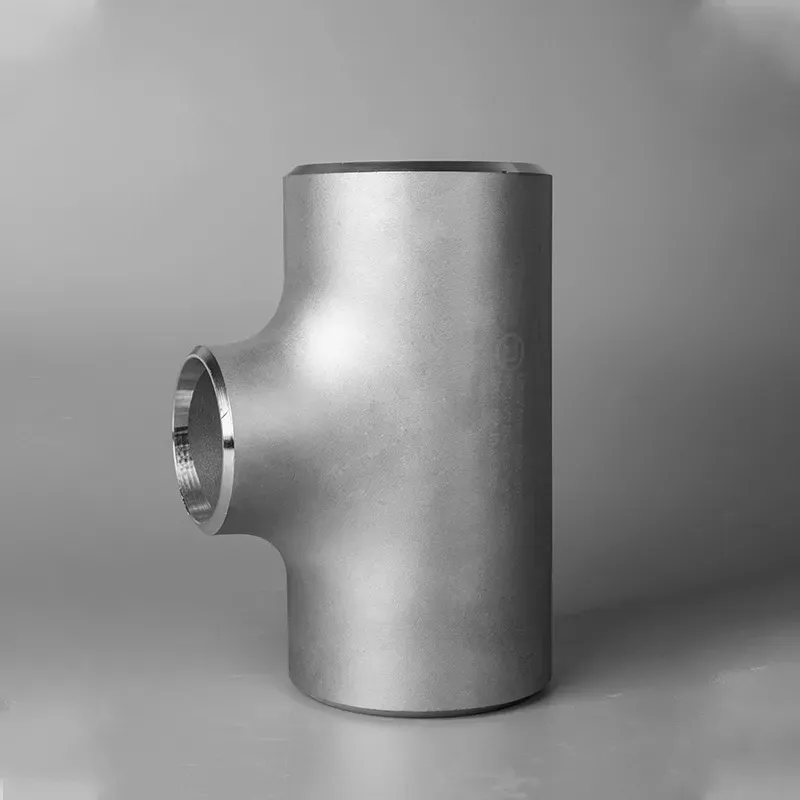-
Cangzhou Yulong Steel Co., Ltd.
-
Phone:
+86 13303177267 -
Email:
admin@ylsteelfittings.com
- English
- Arabic
- Italian
- Spanish
- Portuguese
- German
- kazakh
- Persian
- Greek
- French
- Russian
- Polish
- Thai
- Indonesian
- Vietnamese
- Zulu
- Korean
- Uzbek
- Hindi
- Serbian
- Malay
- Ukrainian
- Gujarati
- Haitian Creole
- hausa
- hawaiian
- Hebrew
- Miao
- Hungarian
- Icelandic
- igbo
- irish
- Japanese
- Javanese
- Kannada
- Khmer
- Rwandese
- Afrikaans
- Albanian
- Amharic
- Armenian
- Azerbaijani
- Basque
- Belarusian
- Bengali
- Bosnian
- Bulgarian
- Catalan
- Cebuano
- China
- China (Taiwan)
- Corsican
- Croatian
- Czech
- Danish
- Esperanto
- Estonian
- Finnish
- Frisian
- Galician
- Georgian
- Kurdish
- Kyrgyz
- Lao
- Latin
- Latvian
- Lithuanian
- Luxembourgish
- Macedonian
- Malgashi
- Malayalam
- Maltese
- Maori
- Marathi
- Mongolian
- Myanmar
- Nepali
- Norwegian
- Norwegian
- Occitan
- Pashto
- Dutch
- Punjabi
- Romanian
- Samoan
- Scottish Gaelic
- Sesotho
- Shona
- Sindhi
- Sinhala
- Slovak
- Slovenian
- Somali
- Sundanese
- Swahili
- Swedish
- Tagalog
- Tajik
- Tamil
- Tatar
- Telugu
- Turkish
- Turkmen
- Urdu
- Uighur
- Welsh
- Bantu
- Yiddish
- Yoruba

Dec . 10, 2024 03:55 Back to list
Price Trends for 1 Inch Stainless Steel Pipe in Today's Market
The Price of 1% Inch Stainless Steel Pipe Factors Influencing Costs and Market Trends
Stainless steel pipes have become indispensable in various industries due to their durability, corrosion resistance, and aesthetic appeal. Among these, the 1% inch stainless steel pipe stands out for its versatility, suitable for applications ranging from plumbing and construction to automotive and manufacturing. However, understanding the pricing of these pipes is crucial for businesses and consumers alike. This article delves into the factors that influence the cost of 1% inch stainless steel pipes and the current market trends.
Understanding Stainless Steel Grades
Stainless steel is available in various grades, each with specific properties tailored for different uses. The most common grades for pipes include 304, 316, and 201. Grade 304, often referred to as the 18/8 stainless steel, is widely used due to its excellent corrosion resistance in a variety of environments. Alternatively, grade 316, which includes molybdenum, offers enhanced resistance against chlorides and is therefore preferred for marine applications.
The grade of stainless steel significantly impacts the price. For instance, 316 stainless steel pipes typically cost more than their 304 counterparts due to the addition of molybdenum, making them more suitable for harsh environments. Therefore, when considering the cost of 1% inch stainless steel pipes, one must also consider the specific grade required for the intended application.
Market Influences on Pricing
Several factors affect the pricing structure of 1% inch stainless steel pipes
1. Raw Material Costs The price of stainless steel is heavily influenced by the cost of raw materials, particularly nickel and chromium. These metals play a critical role in stainless steel production, and fluctuations in their prices can directly affect the overall cost of finished products. For example, a spike in nickel prices can lead to increased costs for stainless steel pipes.
2. Supply and Demand Dynamics Just like any other commodity, the pricing of stainless steel pipes is influenced by market supply and demand. In periods of high demand—for instance, during construction booms—the price of pipes may increase. Conversely, during economic downturns, when projects may be delayed or canceled, prices can drop.
1 inch stainless steel pipe price

3. Manufacturing and Production Costs The cost of labor, energy, and manufacturing processes also play a significant role in the final price of stainless steel pipes. Companies investing in advanced manufacturing technologies may have higher upfront costs, which can affect their pricing strategy.
4. Transportation and Logistics The cost of transporting stainless steel pipes to suppliers and consumers can impact overall pricing. Factors such as fuel prices, shipping rates, and regional tariffs can lead to variations in cost across different geographical locations.
Current Market Trends
As of 2023, the stainless steel pipe market has shown signs of recovery post-COVID-19 pandemic, with many industries ramping up production and expanding their infrastructure. This resurgence has resulted in increased demand for stainless steel products, including 1% inch pipes.
However, the market is still susceptible to global economic fluctuations. Trade policies, particularly in major producing countries like China and India, can create volatility in prices. Furthermore, the ongoing transition to sustainable practices in manufacturing is leading some companies to explore eco-friendly alternatives, potentially impacting the demand for traditional stainless steel pipes.
Conclusion
When evaluating the price of 1% inch stainless steel pipes, it is essential to consider various factors, including material grade, market dynamics, construction trends, and logistical issues. The interplay of these elements can result in significant price variability, making it crucial for buyers to stay informed.
Whether you are a contractor seeking materials for a project or a manufacturer looking to source raw materials, understanding the market landscape will help you make informed purchasing decisions. As the industry continues to evolve, staying ahead of these changes will be key to managing costs effectively and ensuring the success of your projects.
Latest news
-
ANSI 150P SS304 SO FLANGE
NewsFeb.14,2025
-
ASTM A333GR6 STEEL PIPE
NewsJan.20,2025
-
ANSI B16.5 WELDING NECK FLANGE
NewsJan.15,2026
-
ANSI B16.5 SLIP-ON FLANGE
NewsApr.19,2024
-
SABS 1123 FLANGE
NewsJan.15,2025
-
DIN86044 PLATE FLANGE
NewsApr.19,2024
-
DIN2527 BLIND FLANGE
NewsApr.12,2024
-
JIS B2311 Butt-Welding Fittings LR/SR 45°/90° /180°Seamless/Weld
NewsApr.23,2024











